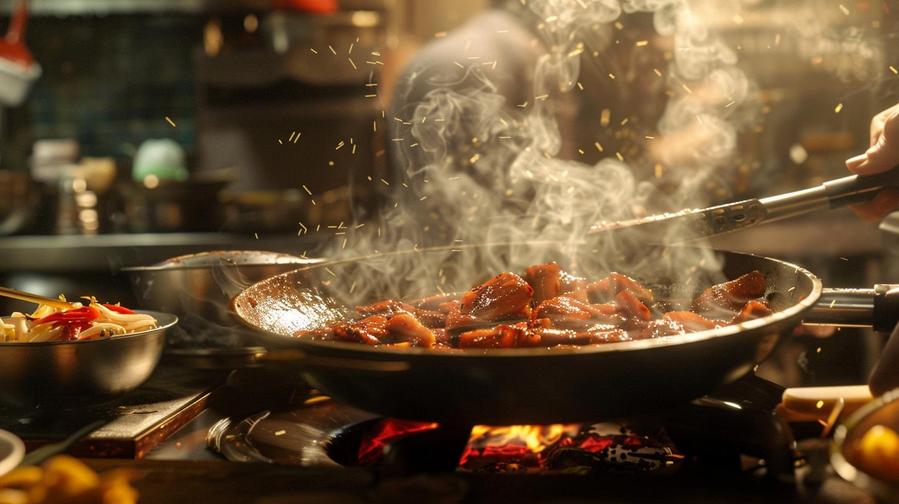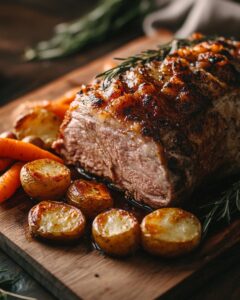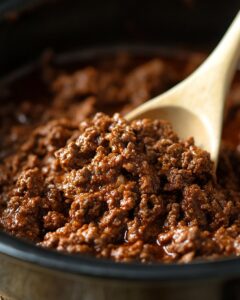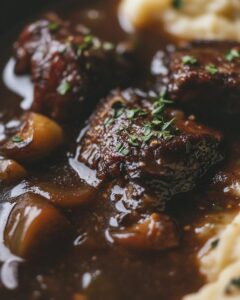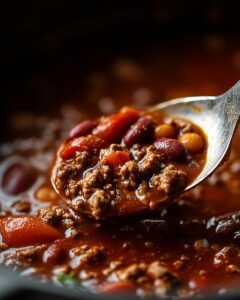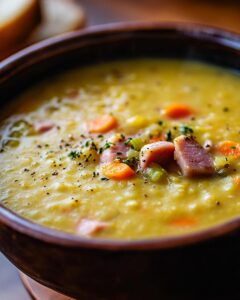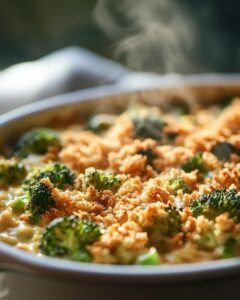Ready to dive into a culinary adventure? Join us as we explore the delightful flavors of our New England Seafood Casserole recipe. Perfect for home cooking enthusiasts, this simple yet delicious dish promises to transform your kitchen into a coastal haven. Whether you’re a seasoned chef or a kitchen newbie, this easy-to-follow guide will help you create a seafood masterpiece that’s sure to impress. Let’s get started!
TL;DR:
- The New England seafood casserole uses fresh flounder, scallops, shrimp, and lump crab. Seasoning includes chicken broth, dijon mustard, and various spices.
- Preparing the seafood involves cleaning, cutting, and sautéing. The flounder is used as the base layer, with bite-sized pieces of scallops and shrimp.
- A savory sauce is made by simmering chicken broth and cream, then adding mustard, cheese, Worcestershire sauce, and a beurre manie for thickness.
- Assembling the casserole involves layering the flounder, shrimp, scallops, and sauce. A topping of Ritz cracker crumbs and Old Bay seasoning is added before baking.
- Baked Seafood Casserole Recipe is cooked at 350°F for 25 minutes.
- Pairing suggestions include steamed rice, salads, and wine like Albariño or Valpolicella.
- Store up to three days in the refrigerator, or two months in the freezer. Reheat at 350°F, timing varies based on whether it’s cold or thawed.

Gathering the Ingredients for our New England Seafood Casserole
Making this dish means gathering the right mix of seafood, seasoning, and dairy among other stuff.
Seafood Selection
Our baked seafood casserole calls for flounder, sea scallops, shrimp and lump crab meat. You can use other types of fish and seafood. Get all the seafood fresh, if you can. It makes a world of difference in the taste.
Seasoning and Spices
For the casserole, we need chicken broth, dijon mustard, black pepper, granulated onion, and granulated garlic. You can add Worcestershire sauce, lemon juice, Old Bay seasoning, and bread crumbs according to your preference. All these help to make our seafood casserole more flavorful.
Dairy and Other Ingredients
Next, we need heavy cream, parmesan cheese, and sour cream. These add a creaminess to our casserole that complements the seafood perfectly. We also need a beurre manie, a mix of flour and butter. It helps to thicken up our sauce.
Ready to hit the kitchen and put these ingredients to use? Let’s cook up some seriously good seafood!
Preparing the Seafood
So, we move on to the exciting part: preparing the seafood. For our seafood casserole, we’ll be using flounder, sea scallops, shrimp, and lump crab meat. Like Chef Dennis Littley’s “Baked Seafood Casserole” recipe, we’re going with these choices for their unique flavors. But fish like cod or haddock would work too if preferred.
Cleaning and Cutting
First things first, the seafood must be clean. We don’t want any remnants of the store or sea in our dish. Each type has its cleaning method. Scallops need a good rinse under cold water. Shrimp needs deveining, and handling flounders require removing the skin and bones. Crab meat, if lump and already picked, just needs a quick check for any missed shells.
Once cleaned, the seafood needs preparation in a way that will cook evenly in the casserole. For our recipe, the flounder will act as the base layer. It needs to fit the casserole dish comfortably without too much overlap. The scallops and shrimp should be cut into bite-sized pieces. Remember, the aim is for each spoonful to get a little of everything.
Sautéing the Seafood
Our flavorful seafood casserole begins with sautéing the seafood. In a large pan, we can melt some butter or use olive oil if preferred. Adding the seafood to the hot pan begins the cooking process. Sauté the scallops and shrimp till they gain some color but are still not fully cooked. We then move them out of the pan and set aside. This step helps infuse the seafood flavors into the butter.
Later, this base becomes a fundamental part of our sauce. This combination of seafood sautéed in butter adds such a depth of flavor to the dish. The intoxicating aroma is hard to resist!
Stay tuned to find out how we use this flavorful base in the next step: Making the Sauce. This New England Seafood casserole is turning out to be quite a delightful experience, isn’t it?
Related Recipes:
–Harissa Chicken Recipe: Spice Up Your Next Meal With This Simple Curry

Making the Sauce
The secret to a truly heartwarming seafood casserole lies in its sauce. To create a creamy seafood casserole recipe, real simple is the aim. So, let’s dive right into it.
Creating the Base
First, we form the base of our sauce, a rich and creamy blend using chicken broth and heavy cream. The cream provides a touch of richness, while the broth lends a savory depth that ties all the flavors together. But that’s not all. To add to this, we infuse it with granulated onion and garlic — the go-to base for any great sauce!
Adding Flavor
Once the base is ready, it’s time to kick it up a notch! We stir in some dijon mustard, lending a subtle, tangy edge that perfectly balances the creaminess. Black pepper brings heat and complements the sweetness of the cream and the seafood perfectly. Should you wish for a hint of cheesy deliciousness, you can add some parmesan cheese. For an additional dash of complexity, Worcestershire sauce integrates wonderfully, and a squeeze of lemon juice brings a touch of acidity to offset the rich flavors.
What brings out the creaminess in a seafood casserole with cream cheese? The answer lies in beurre manié – a simple yet transformative mixture of soft butter and flour. As you simmer your sauce, add this in to thicken it, resulting in a rich and luscious texture that will beautifully envelop your seafood!
In this step, our goal is to create a delicious sauce that’s loaded with flavor but remains balanced. By simmering it and letting it reduce, we ensure that all flavors meld together perfectly.
Remember, this is also the moment to adjust your seasonings. Taste the sauce; it should be delightfully creamy with a zing of mustard, a hint of pepper, and the gentle, underlying sweetness of the onion and garlic. Then it should end with the tanginess of the lemon juice. Once you’re satisfied, proceed to the next step: combining this carefully crafted sauce with your sautéed seafood.
So there you have it! The secret to a delicious New England seafood casserole sauce, which will bring your casserole to new heights of flavor. Happy cooking!
Assembling the Casserole
Once you have your seafood prepared and your sauce ready, assembling your baked seafood casserole is as easy as layering the ingredients and adding some tasty toppings. This next stage is where you really start to see your dish taking shape.
Layering the Seafood
Start by laying out flounder fillets at the bottom of your casserole dish. The flounder creates a solid base for our casserole. On top of the flounder, you’ll add a mixture of sautéed shrimp, scallops, and lump crab meat. Remember, it’s perfectly acceptable to use other types of fish or seafood based on availability and your personal taste. Some people love to add in a bit of lobster or clams for an extra splash of New England flavor.
Adding Sauce and Toppings
Once your seafood is nicely layered, you’ll want to pour over the sauce you’ve prepared. Our recipe uses a delicious mix of chicken broth, heavy cream, Dijon mustard, granulated onion, and granulated garlic; however, you can adapt to suit your palate. Some other ingredients you could consider include Worcestershire sauce, lemon juice, Parmesan cheese, and sour cream. Whichever route you decide to go, make sure your sauce is well-seasoned. It’s going to pack the flavorful punch in your casserole.
After the sauce, it’s time for our secret weapon: Ritz crackers. Crush up some of these buttery gems to create a crumb topping for your casserole. This will serve as a delightful contrast to the soft, cooked seafood underneath. Sprinkle over some Old Bay seasoning if you have on hand. This gives an extra hint of flavor that works really well with seafood.
The final step is to bake your assembled casserole at 350°F for about 25 minutes. You’ll know it’s done when that Ritz cracker topping is golden brown and crispy. Served with rice, this New England seafood casserole is sure to impress. Trust me, your dinner guests will be begging for the recipe before they’ve finished their meal!

Baking the Casserole
Setting the Temperature
One question you might have is, “What temperature should I bake my seafood casserole at?” The correct temperature for baking a seafood casserole, like our version inspired by Captain George’s seafood casserole, is 350°F. This temperature ensures that the seafood cooks thoroughly without becoming tough.
It’s also vital that the oven is preheated. Why? Remember, putting your casserole in a preheated oven guarantees even cooking from the start. So ensure the oven gets a good 15 to 20 minutes to heat up.
And what’s the best way to check your oven temperature? Oven thermometers are cost-effective and reliable tools to use. Just place it in the oven during preheating and check the reading before putting your casserole in.
Timing the Bake
Next, let’s talk about timing. “How long does the casserole need to bake?” you may ask. The casserole will need to bake for approximately 25 minutes. How do you know when it’s done? Look for the top layer to become golden and bubbly. That’s when you know your old fashioned creamy seafood casserole is ready.
Do the cooking times vary depending on the seafood? Yes, different seafood types could potentially alter cooking times. However, the process becomes much easier if all your seafood – flounder, shrimp, scallops, or crab meat – are similar in size.
Now, who’s ready for a seafood feast?
Link to: Baked Seafood Casserole Recipe with wine pairing recommendations.
Let’s move on to the next step in our casserole craft: pairing and serving.
Pairing and Serving Suggestions
Drawing from the heart of maritime dining in New England, this seafood casserole is a star dish in its own right. That said, a few well-chosen side dishes and drink pairings can take it to new heights. So, how to best highlight the flavors of our tasty mélange of flounder, shrimp, scallops, and crab meat, all nestled beneath a golden crust? Let’s find out.
Rice and Side Dishes
I always find that a side of simple steamed rice provides a fantastic duo with juicy seafood casserole. Its natural mildness makes it the perfect base to soak up all the buttery juices and creamy sauce of the casserole. If you want to add more flare, you can opt for long-grain basmati or even a vibrant saffron-infused rice.
For veggie sides, how about something crispy and fresh to contrast the rich casserole? A light arugula salad, perhaps? Its peppery notes are a nice foil for the creaminess of the fish. Steamed asparagus or grilled zucchini would also pair nicely, adding a bit of charred flavor to the mix.
Wine Pairings
Now, onto the drinks. A general rule of thumb when pairing wine and seafood is this: crisp and bright equals right. Following this principle, a chilled glass of Albariño, with its apple and citrus notes, is a great fit. This wine from northwestern Spain is noted for its freshness, which can cleanse the palate and balance the creaminess of the casserole wonderfully.
If you are more inclined towards reds, a bottle of light-bodied, slightly chilled Valpolicella could do the trick. Its lively acidity and tangy cherry character will ensure your meal is not overly heavy. The aforementioned Albariño and Valpolicella, along with more suggestions can be found here.
Remember, my fellow cooking enthusiasts, that the secret of a good meal is not just what you serve, but how you serve and pair it. Each piece of the meal plays its part, just like each ingredient in our New England Seafood Casserole recipe, creating a culinary harmony that is a joy to experience.

Storing and Reheating
When it comes to serving our baked seafood casserole with bread crumbs, leftovers are rare. Yet, if you do have any, knowing how to store and reheat it is key.
Preservation Methods
First, allow the best New England seafood casserole to cool before storing it. Then, transfer it into an airtight container or wrap it well in aluminium foil. You can store it in the refrigerator for up to three days. Yet, to relish the freshness for longer, consider freezing it.
When freezing, divide the casserole into meal-sized portions. This way, you reheat only what you’ll eat. Make sure to use freezer-safe containers or bags. The frozen casserole can stay fresh for up to two months.
Reheating for Best Flavor
For reheating, if you’ve frozen your casserole, let it thaw overnight in your refrigerator. It makes reheating even and quicker. Using an oven to reheat the casserole helps retain its texture and taste. Preheat your oven to 350°F. If the casserole is cold from the fridge, reheat it covered for about 20 minutes. But if it’s thawed, 10-15 minutes should be enough. If the top isn’t as crusty as you’d like, you can broil it for a minute or two. Be watchful though, so it doesn’t burn!
Remember, do not reheat more than once. Seafood is delicate, and repeated changes in temperature can spoil the dish.
With these tips at hand, every bite of your reheated casserole will feel like it’s freshly out of the oven.
We’ve walked through all the steps to create a flavorful New England seafood casserole. From gathering the right seafood and seasoning to baking and serving it with the perfect wine. Now, it’s your turn to bring this recipe to life. Remember, the joy of cooking is about exploration and enjoyment. So, don’t stress, have fun, and most importantly, savor every bite of your homemade seafood casserole. Happy cooking!

